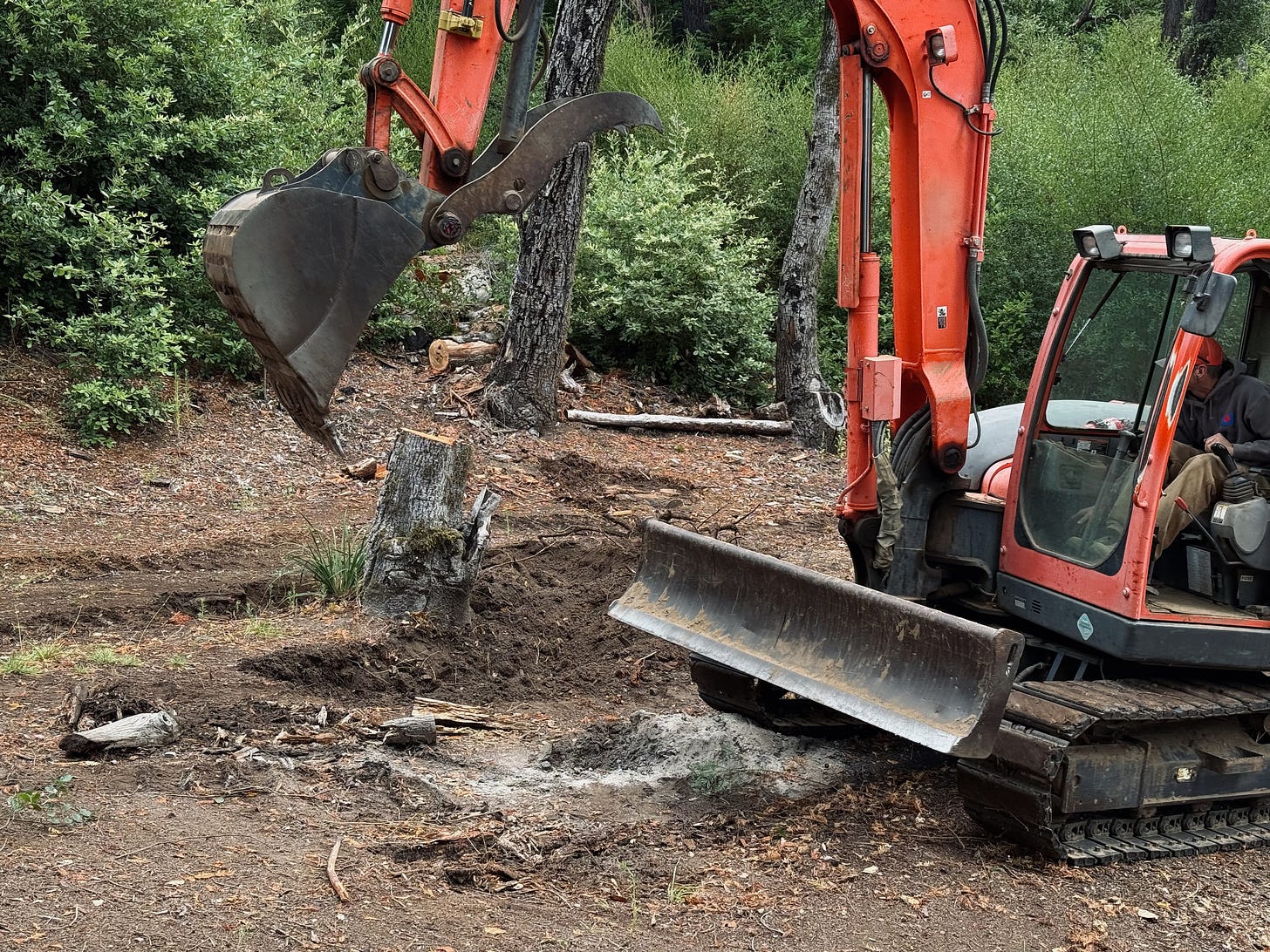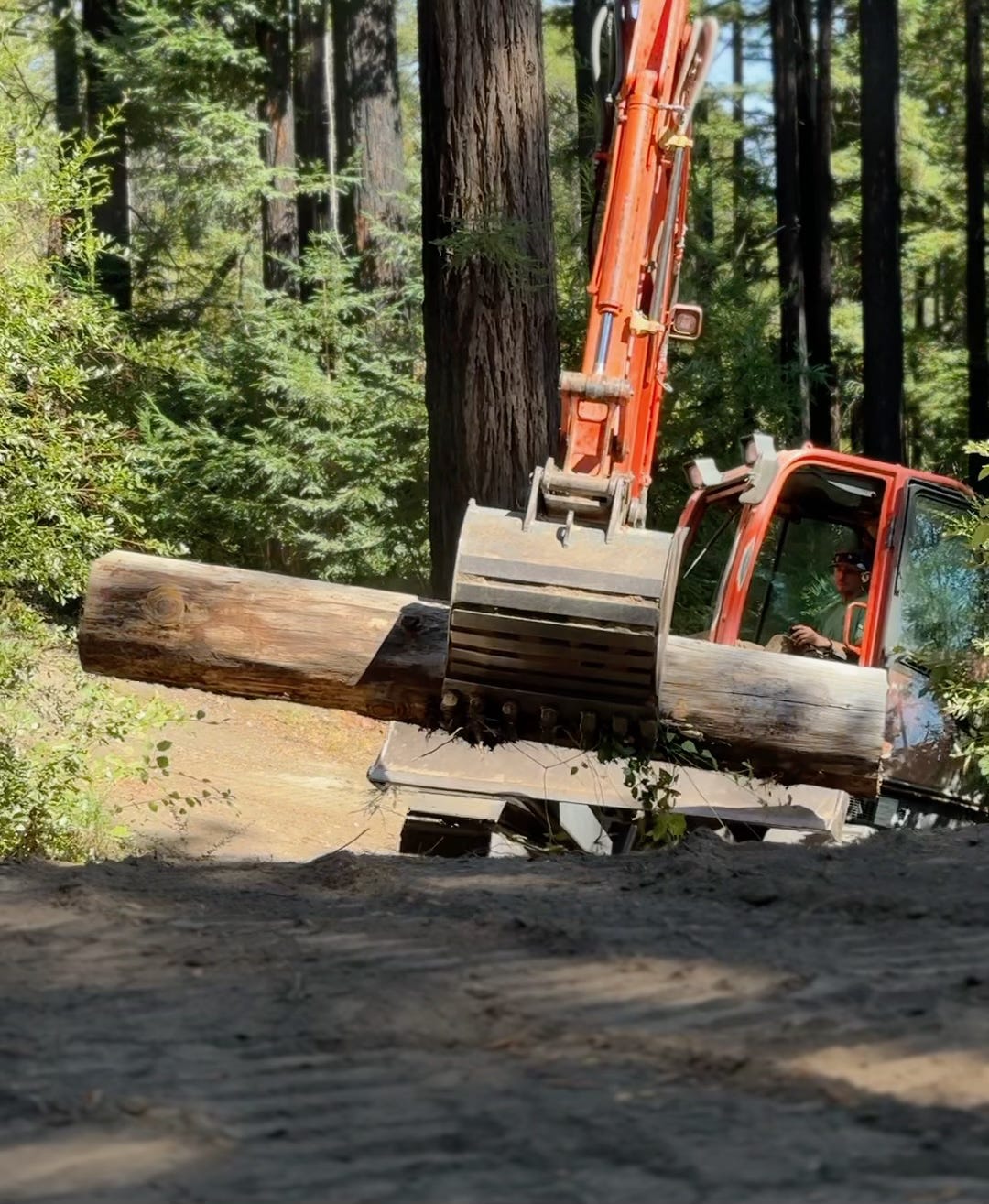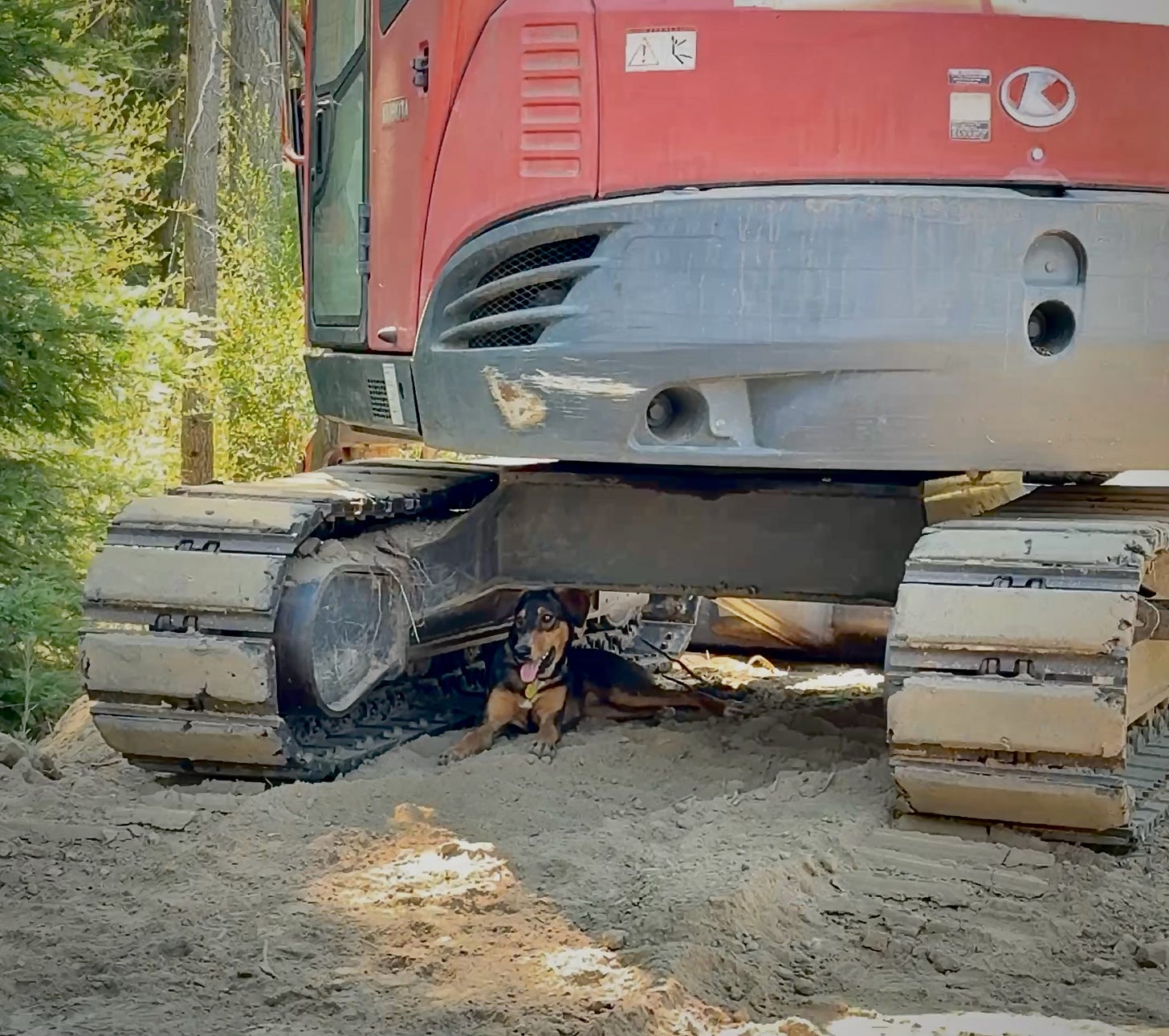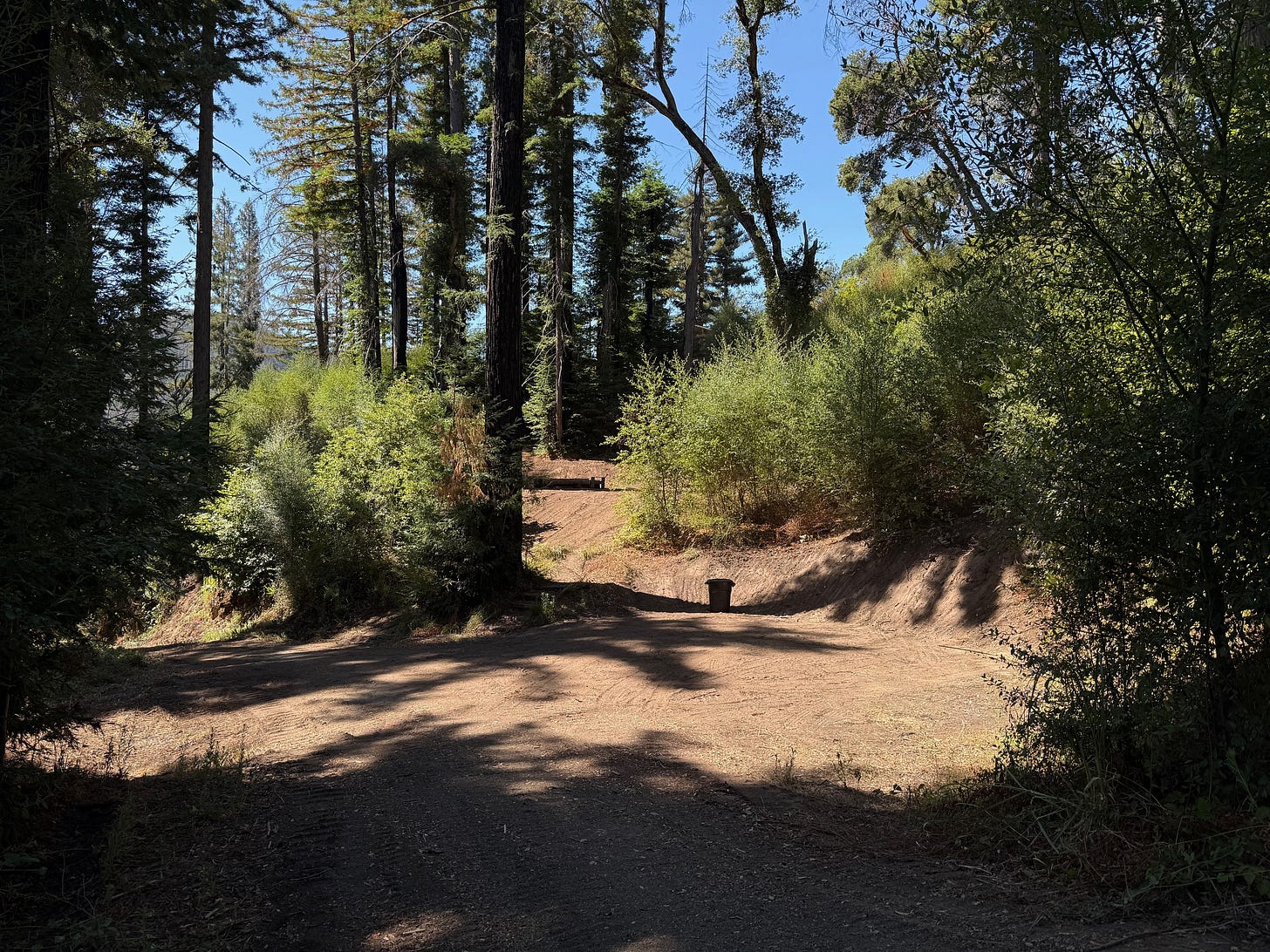It’s easy to coast on inertia and the tacit acceptance of what just is—that psychological hurdle where “Oh right, that’s on the table” lies just beyond and out of sight.
The classic example is Roger Bannister breaking through the barrier of the long-standing and believed-to-be-impossible 4 minute mile, kicking open the door for so many others to crush the record within days and months. Methods of construction also come to mind—cruising along with what’s not necessarily the best, but is familiar and habitual (though hopefully pretty dialed). “We always do it this way.” Ulterior options aren’t always so much daunting or difficult, as they are simply unconsidered.
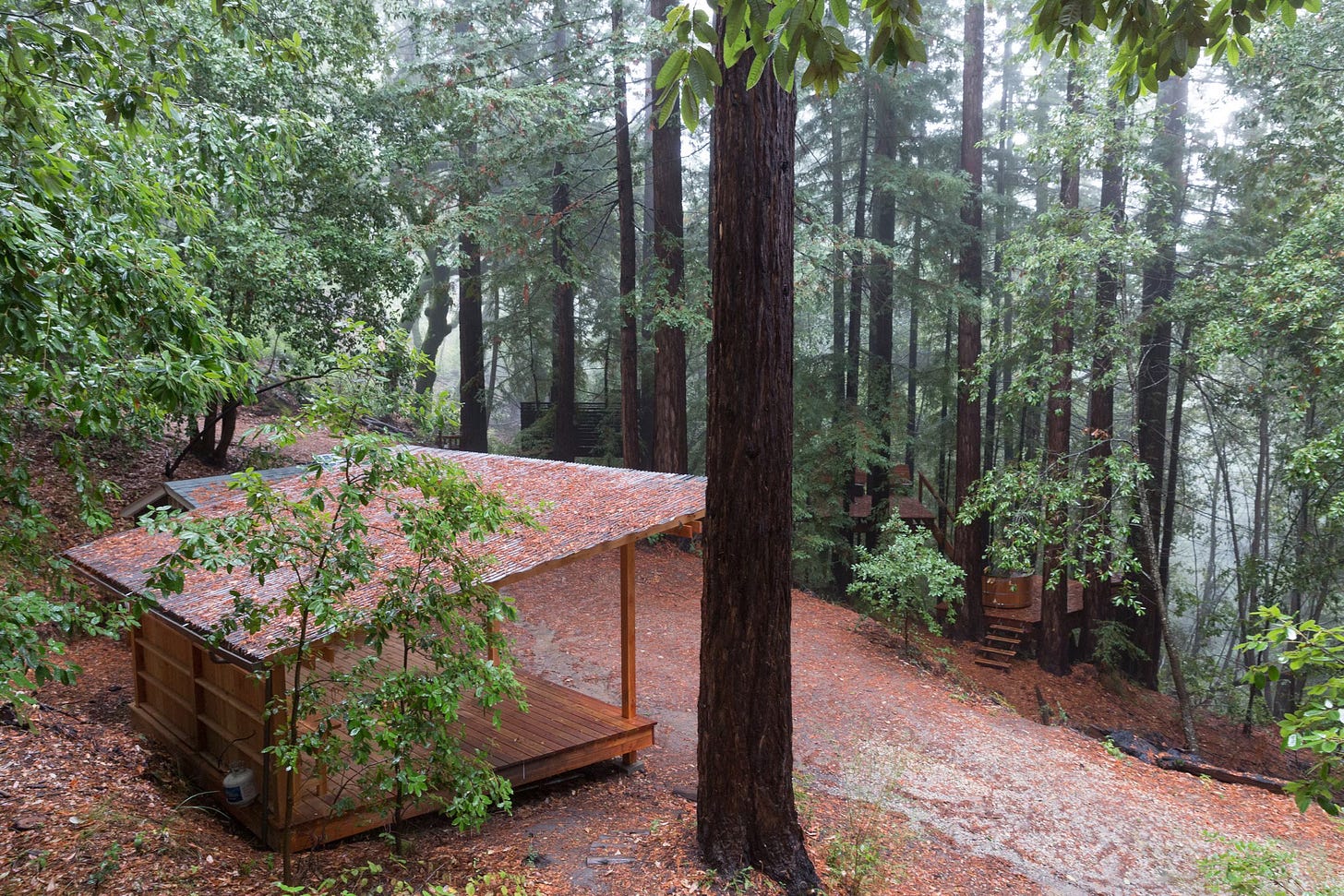
I encounter this plenty. It can be difficult to imagine the possibilities beyond my lived experience, or to think outside the relatively narrow confines of my usual methods, materials, or tools. I sometimes find myself living with, and accepting of, friction and inefficiencies that probably don’t need to be there. A sticky door, a sticky zipper, a sticky-and-unresolved relationship dynamic… Things that work, but don’t work as well as they should, and in time they grow needlessly cemented.
Expectedly, all this recently came up while trying to see the world through the eyes of an 8-ton excavator.
Our acreage is wooded and steep and has only a few paths and pads carved into it. Molly and I have been accepting of these qualities and have sailed on the momentum of what we inherited. Over the years we put those accessible spaces to use and when we needed more flat ground, we built it from wood. But then a wildfire unbuilt it and we never really addressed that particular shortcoming—we just recognized our loss of traversable real estate and the reality that milling about our space now meant more uneven footing and a perpetual subconscious tension.
Our property became less comfortable, less usable, and so—shocker—it’s seen less use.
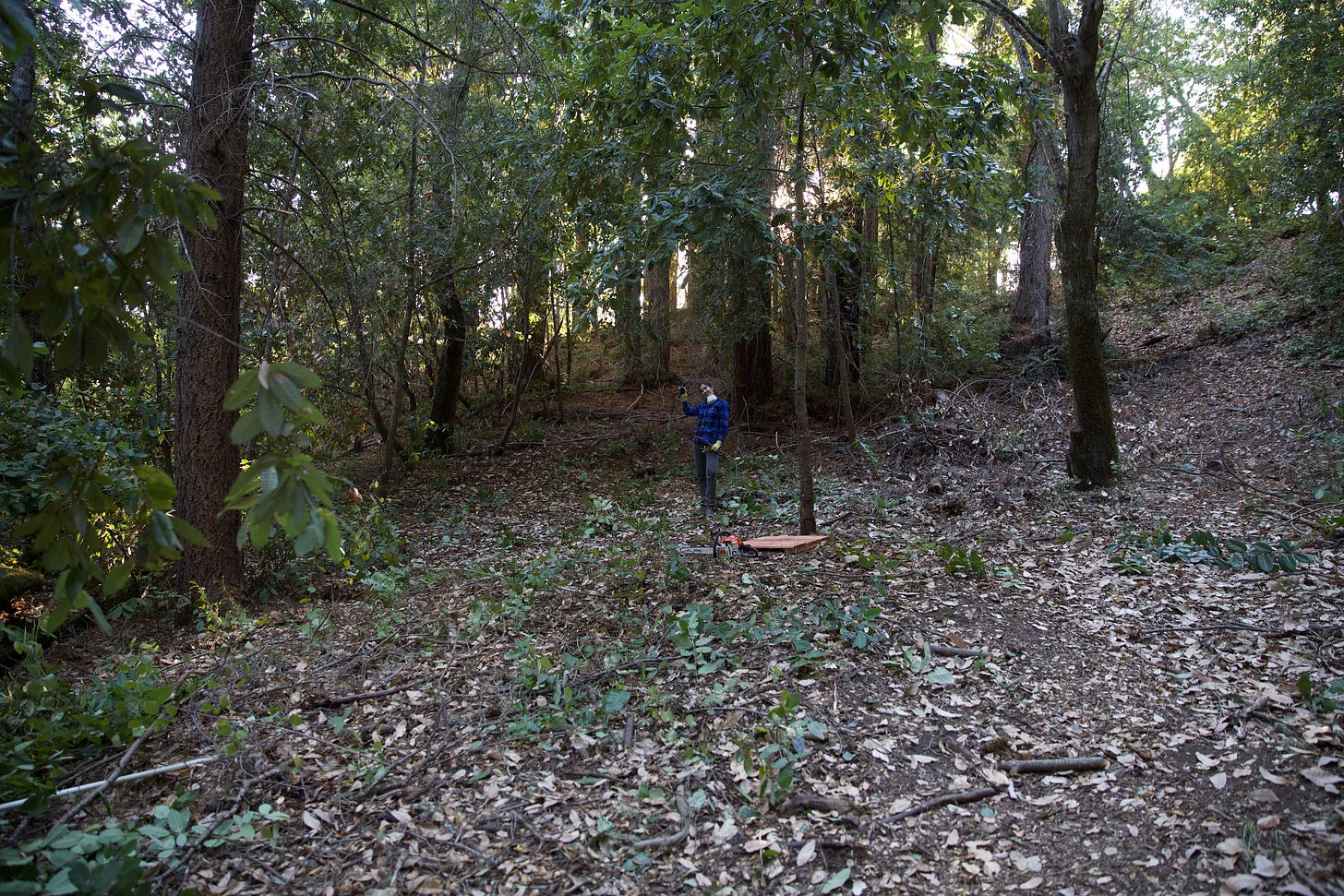
Take the main hub of our fire ring area. Opening up that clearing with a chainsaw was one of the first bits of work we ever did. But it was only relatively flat, and as much as folks would gather there to cook, and sling axes and arrows, and sprawl out, it’s never really been level enough to pitch a tent, and nudging a chair back from the fire meant risking a topple on the hillside. But we just allowed that this was a fact of how things had to be…
Until a couple months ago anyway, when we brought in Chris, our road work guy from many years back, to talk to us about the potential of moving some dirt around.
When we reached out to Chris to ask about what possibilities he saw as approachable and transformative, it was because we suspected that we were locked in on a fixed perspective and unable to see beyond our blinders.
It’s not as if we didn’t know earth could be shuffled around. We’ve done it… but just once and only a little. It was easy to miss what was not only doable, but frankly, trivial. And with Chris’ external input jostling those thoughts loose, we were able to make a plan for a few days work, to create some more usable space.
Last week Chris returned to the property with his excavator and loader.
He made quick work of leveling out our fire pit area. Then he cut the cabin to outhouse trail from tight footpath into an ample road. That dirt was used to broaden the flat pad around the cabin. He enlarged turnaround and parking areas and removed problematic stumps. Root balls that had been upended in storms and treetops that had broken off—hazards and eyesores we’d not yet had the time to process—he hoisted from hillsides and placed in more advantageous positions. He knocked off a laundry list of odds and ends too major for a shovel and laughably minor for heavy equipment, and he did it in under three days for less than $4000.
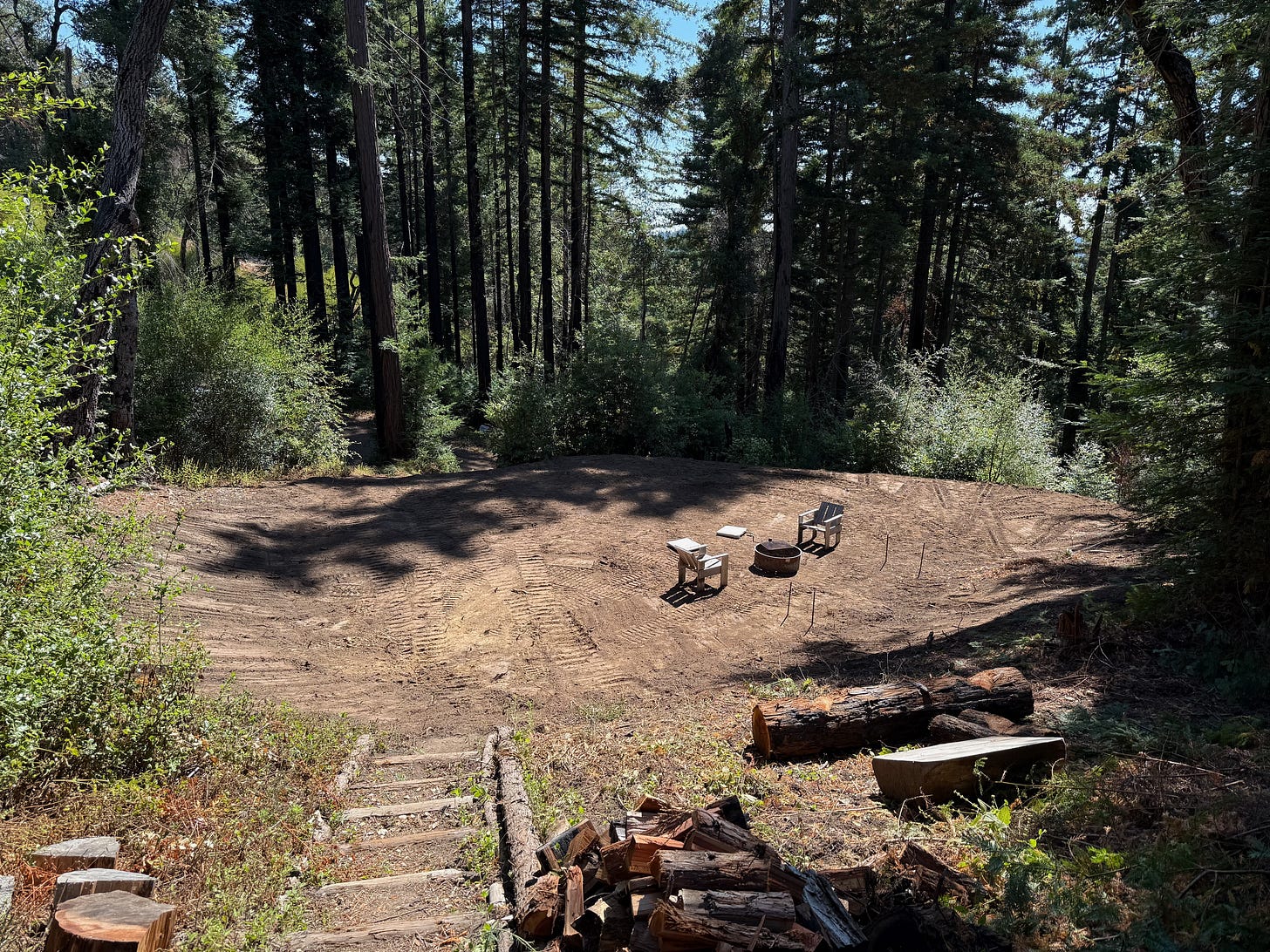
It’s not as if we razed the entire plot to a site primed for condo development—all things considered these were relatively small changes. Yet these reasonable modifications make the place far more usable and comfortable, cost fairly little, and still somehow the notion evaded us for years as we settled into the new normal of a post-wildfire property. We were trapped in a rut of our own lack of imagination and unable to see how the land, and our relationship with using it, could attempt to evolve.
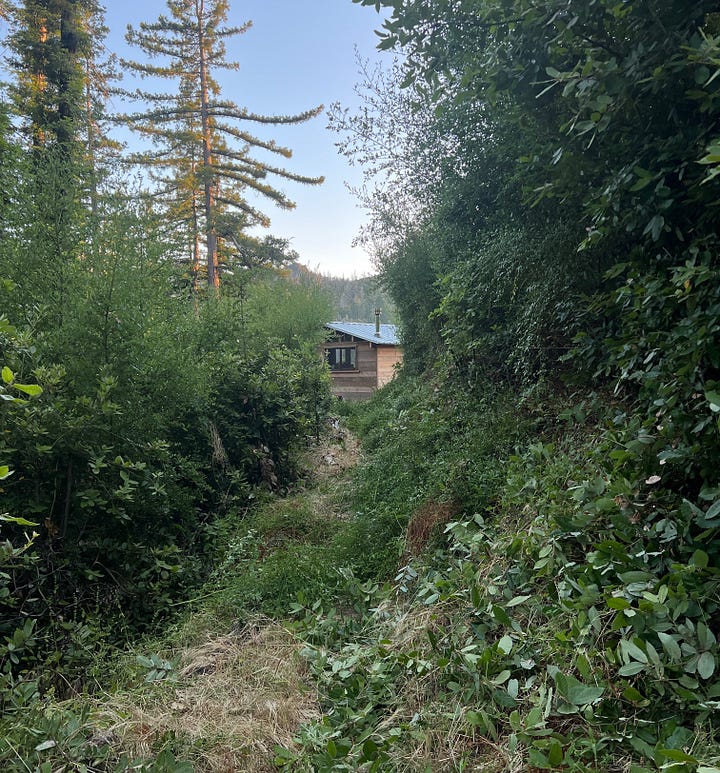
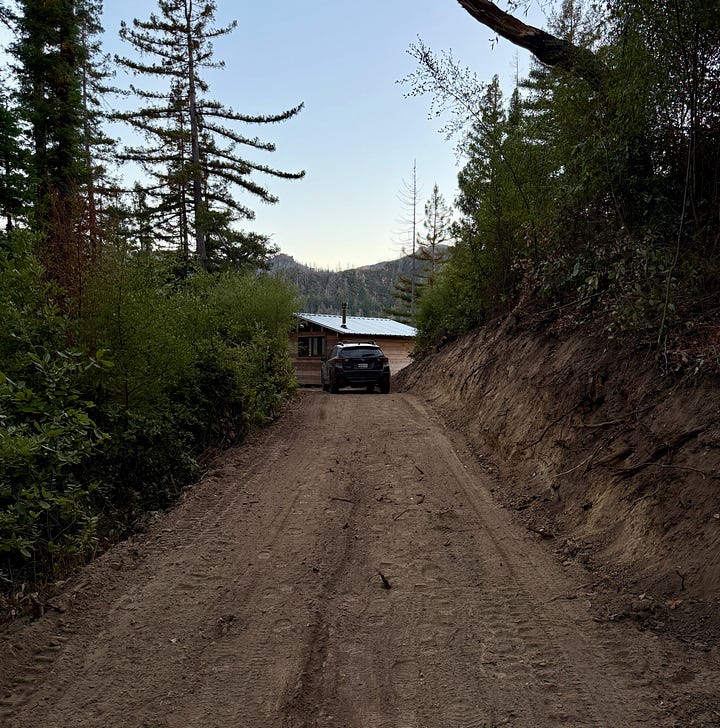
That’s the barrier of the unfamiliar and the stagnation of myopic thought—it takes a fresh vantage, or an instance of hands-on experience (and perhaps a refresher or two in the case of earth-moving equipment), to kick open the door and expand the scope of what feels possible—and maybe even a bit trivial with the right heavy equipment.
DIRECT TO YOUR INBOX
NEW TO THE NEWSLETTER? TO BUILDING?
Start with these posts on Project Planning and Construction Basics.
Or these posts on Community Building.
Or browse. Posts wander from friendship, to workshops, to tools, to explosives. Because we contain multitudes.



